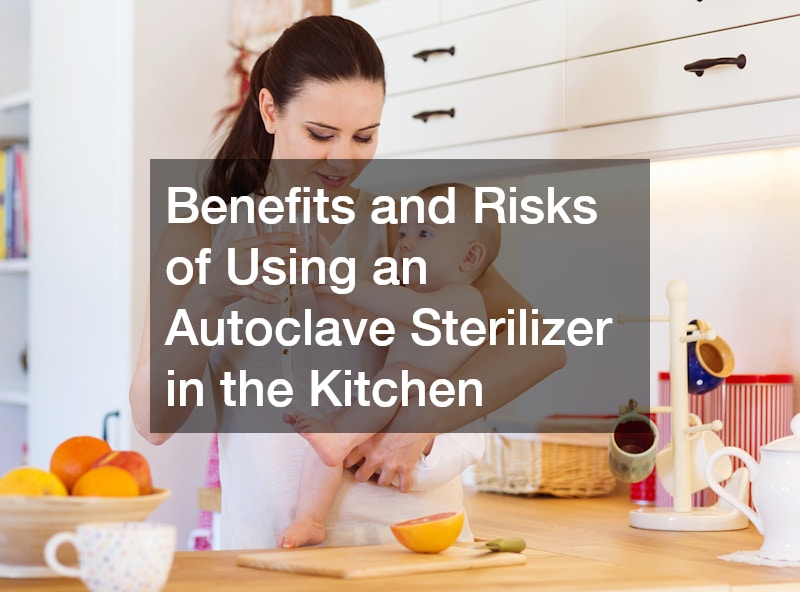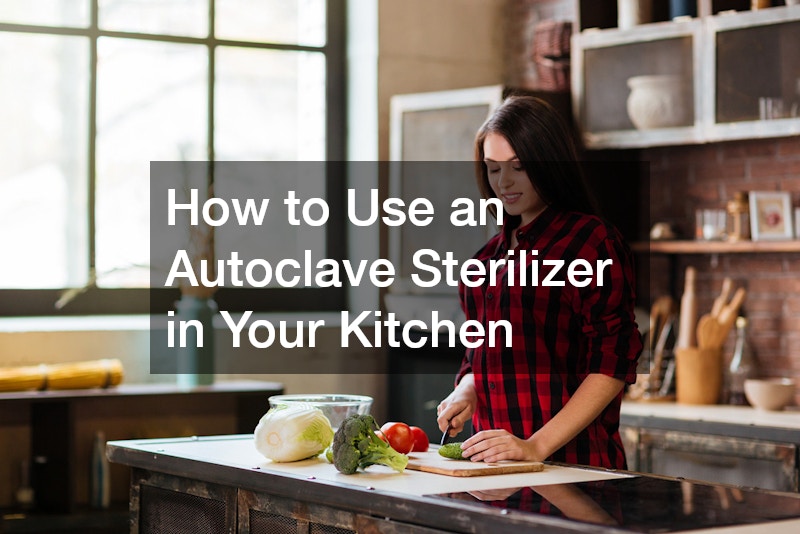Autoclave sterilizers are traditionally associated with medical settings but offer potential applications in a modern kitchen. By using high pressure and temperature, these devices ensure thorough sterilization, which is crucial for reducing cross-contamination and foodborne illnesses. Incorporating an autoclave sterilizer in the kitchen could revolutionize food safety standards and offer home cooks and professional chefs increased peace of mind.
How to Properly Operate an Autoclave Sterilizer
Understanding the Basics of Autoclave Functionality
An autoclave uses pressurized steam to kill microorganisms on kitchen tools and surfaces. Effective sterilization is typically achieved at temperatures of 121 degrees Celsius (250 degrees Fahrenheit), maintained for a specific duration depending on the item being sterilized. Pressure settings within the autoclave ensure that steam penetrates deep into the materials, making it effective against bacteria, viruses, and spores.
The process begins when items are placed inside the autoclave’s chamber, which is sealed to prevent steam from escaping. By combining heat and pressure, autoclaves destroy proteins within microorganisms, effectively neutralizing pathogens. This method surpasses regular cleaning techniques, offering extra safety in food preparation.
One fact to remember is that autoclaves can sterilize materials that can withstand moisture, heat, and pressure, making them suitable for various kitchen tools. Such functionality helps maintain hygiene standards much higher than traditional sanitizers or manual cleaning. This is especially beneficial in high-demand kitchen environments, where preventing contamination is paramount.
Step-by-Step Guide to Operating an Autoclave
Begin by sorting items to be sterilized, ensuring they are compatible with autoclave conditions. Carefully load the items into the autoclave, providing enough space for steam circulation and avoiding overloading. Close the chamber door securely and select the appropriate cycle based on the materials and sterilization needs.
Start the machine and monitor the pressure and temperature settings until the cycle is complete. Once completed, allow the autoclave to cool before opening, preventing abrupt changes in pressure and temperature that could damage items. Wearing protective gear is advised when unloading to avoid burns from residual heat.
Implementing this process requires precision, but with practice, it becomes a straightforward routine for maintaining sterile kitchen equipment. Users can tailor the sterilization process to their needs by thoroughly understanding each cycle setting. Regular autoclave maintenance is also crucial to ensure its effectiveness and longevity.
Common Mistakes and How to Avoid Them
Overloading the autoclave is a common mistake that reduces its efficiency, preventing steam from reaching all areas. To avoid this, evenly space items and ensure they do not obstruct steam valves or vents. Regularly checking the manufacturer’s guidelines can offer vital tips on optimal loading strategies.
Ignoring the maintenance schedule is another prevalent error that compromises the autoclave’s performance over time. Routine inspections and cleaning prolong the equipment’s life and ensure the sterilization process remains effective. Users should never skip maintenance protocols, as failing parts can lead to inconsistencies in sterilization.
Selecting the wrong cycle for a particular type of load can cause significant damage to the items or lead to inadequate sterilization. Familiarity with the settings and what they entail for different materials mitigates this risk. If you are uncertain about a specific autoclave function, always refer to guidance documents or seek expert advice.
Benefits and Risks of Using an Autoclave Sterilizer in the Kitchen

Benefits of Using an Autoclave Sterilizer
The primary advantage of using an autoclave sterilizer in the kitchen is its unparalleled ability to eliminate harmful microorganisms. This ensures kitchen utensils and surfaces are pathogens-free, dramatically reducing the risk of foodborne illnesses. As a result, it provides peace of mind to users who prioritize health and sanitation.
In addition to health benefits, autoclaves enhance the efficiency of kitchen operations by minimizing downtime for cleaning and reducing cross-contamination risks. By streamlining the sterilization process, kitchens can operate smoothly without compromising safety. Professionals in the culinary industry might find this particularly advantageous as they cater to high food production volumes.
Technology further highlights an evolving trend in modern kitchens that favors precision and reliability in cooking practices. Integrating such advanced equipment aligns with a trend toward sustainable and technologically enhanced cooking environments. Professional kitchens can use this technology as a selling point for safety-conscious clientele.
Potential Risks and Safety Precautions
Despite its benefits, incorrect use of an autoclave can pose risks such as burns from steam or equipment malfunction. Users must follow safety guidelines stringently, using personal protective equipment to avoid contact with hot surfaces or steam releases. Proper training and awareness of operation protocols are necessary prerequisites for kitchen staff.
A risk associated with improperly maintained autoclaves is the potential loss of sterilization efficacy, which can lead to false assumptions about the cleanliness of items. Regular maintenance checks and adherence to performance standards can mitigate this risk. Incorporating a routine of checks ensures the device operates within its optimal range.
Power outages or equipment failures can also interrupt sterilization cycles, compromising the process. Back-up systems or fail-safes should ideally be part of facility planning to address such events. Continuous monitoring and maintaining a log of sterilization cycles can help detect and rectify these issues promptly.
Comparison with Other Sterilization Methods
Autoclaves offer more thorough sterilization than UV sterilization or chemical cleaning agents. While UV light is limited by line-of-sight and effectiveness on surface presence only, chemical agents may leave residues that affect food safety. Autoclaves penetrate deeply without compromising the quality of utensils, especially metal and heat-resistant materials.
Unlike dry heat or boiling, which might unevenly affect more oversized items or specific materials, autoclaves uniformly apply moist heat across entire loads. This ensures comprehensive sterilization in one cycle without frequent adjustments. Such a robust sterilization method is unparalleled in professional settings where consistency and thoroughness are essential.
An autoclave’s efficiency in handling various loads makes it a preferred choice in environments where maintaining impeccable hygiene is non-negotiable. The multi-faceted nature of autoclave sterilization means it can cater to diverse kitchen needs with fewer concerns about equipment compatibility. This versatility is a testament to the autoclave’s evolving role beyond medical settings into culinary spaces.
Adopting an autoclave sterilizer in the kitchen significantly advances food safety and equipment hygiene. The key advantages include improved sterilization capabilities, reduced risk of pathogen transmission, and time-efficient cleaning processes. However, users must remain attentive to operational guidelines and maintenance to harness the benefits while minimizing risks entirely.

